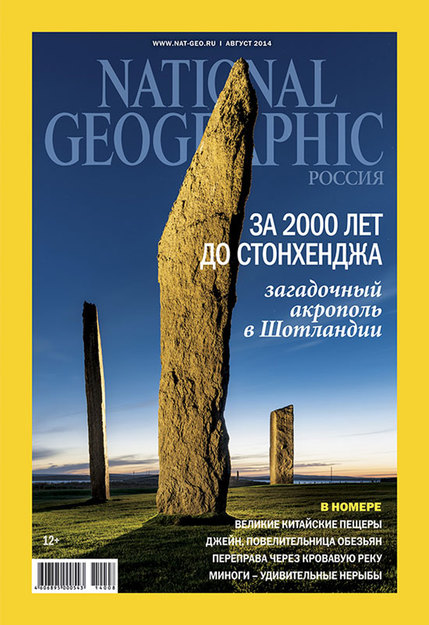National Geographic Russia in August

Five thousand years ago, the residents of the Orkney Islands – an archipelago in the north of Scotland – managed to erect a complex of structures that surpassed all previous achievements of human civilization. According to researchers, the significance of these structures is on a par with such great historical monuments as the Greek Acropolis, but with only one difference: the Scottish masterwork is 2,500 years older. Read more about Orkney’s “Scottish Stonehenge” in the cover story of the August issue of National Geographic Russia.
Readers will also find a story about the karst caves in the south of China that are recognized as some of the largest in the world. In 2013, British speleologists organized an expedition that measured several of the cave’s complexes with laser scanners. This new technology helped the speleologists see what man would never ordinarily glimpse with the naked eye.
This issue also contains an interview with Jane Goodall. The renowned researcher, who turns 80 this year, reflects on her life of science and how she formed her amazing relationships with chimpanzees.
Andrei Gudkov, a regular photographic contributor to the magazine, also presents a photo report in this issue showing how, at the border between Kenya and Tanzania, vast herds of zebra and antelope cross the Mara River that is teeming with predators.
Passions boil over not only in African rivers, but also in the rivers of Central Russia – home of the ancient and bizarre lamprey. This creature has gills and a tail fin but no scales, paired fins or bones.
Read about all this and much more in the new issue of National Geographic Russia.


